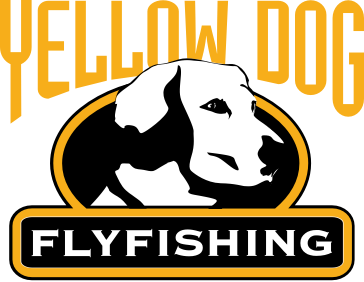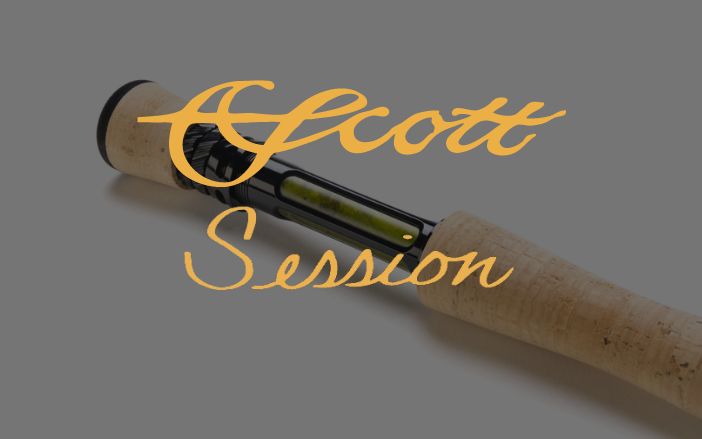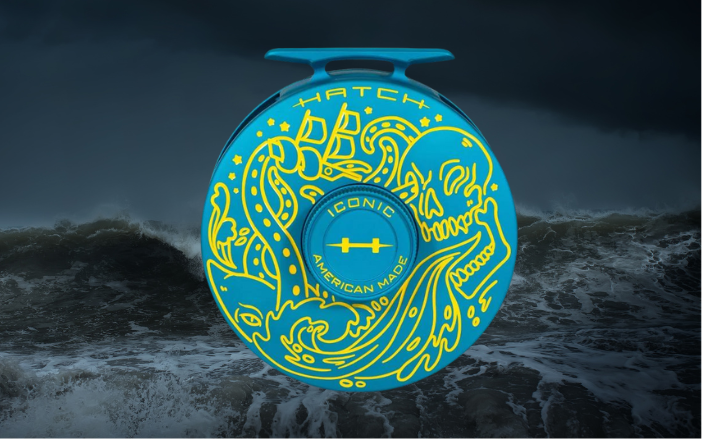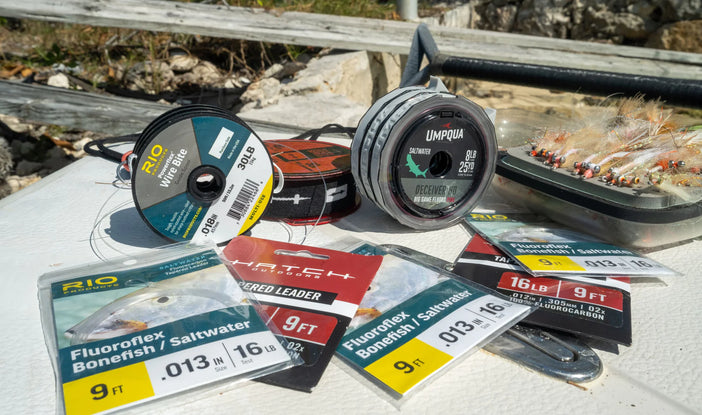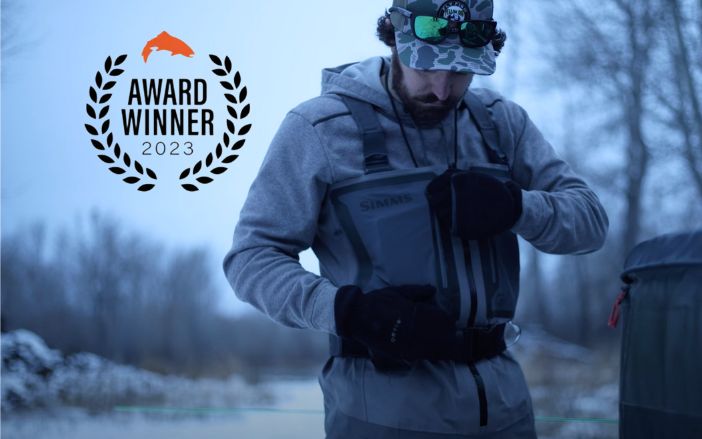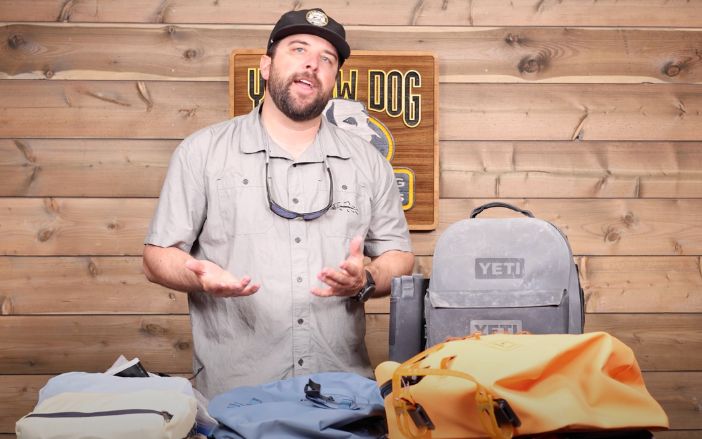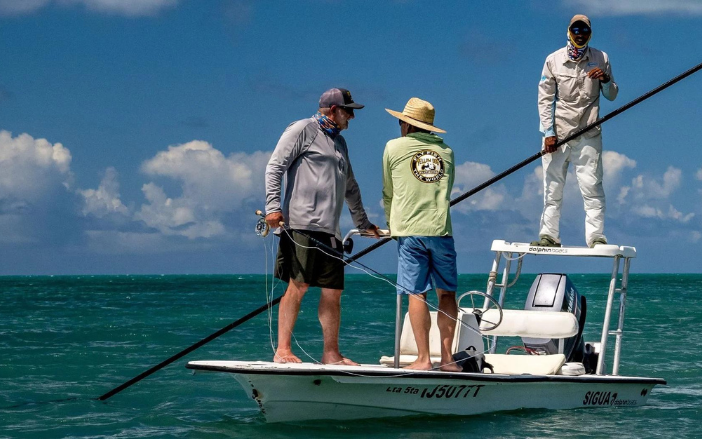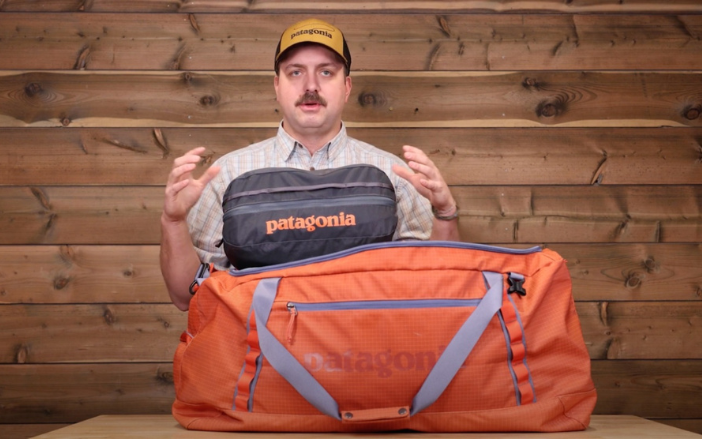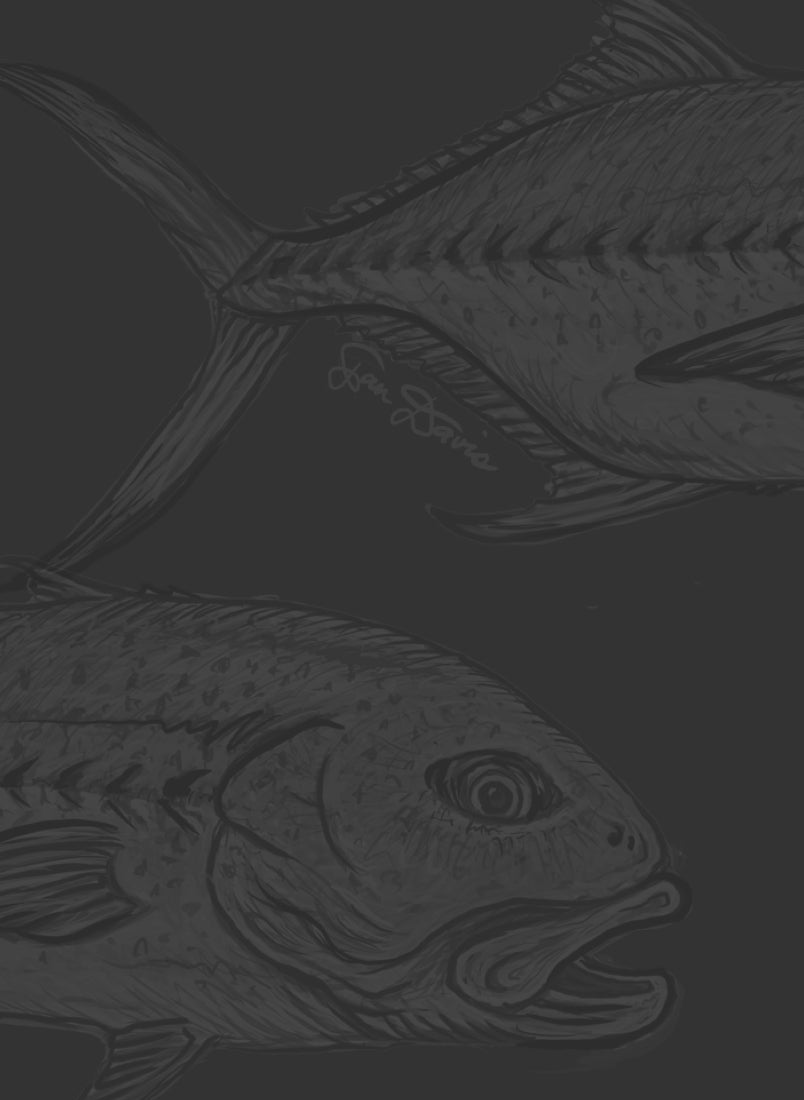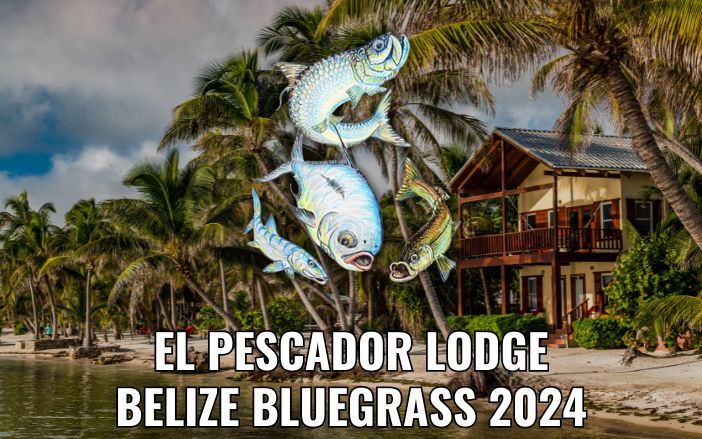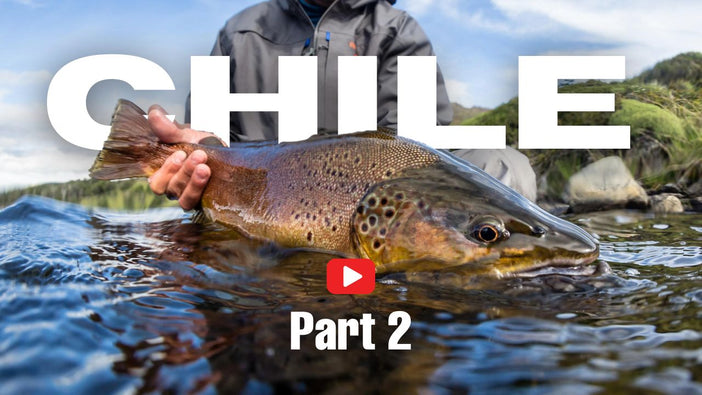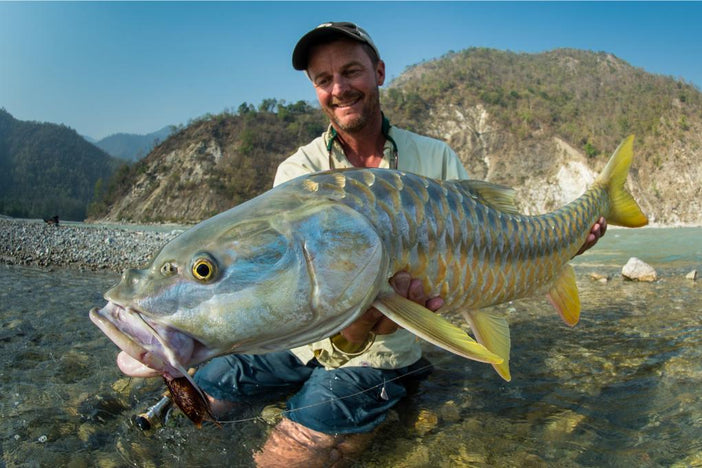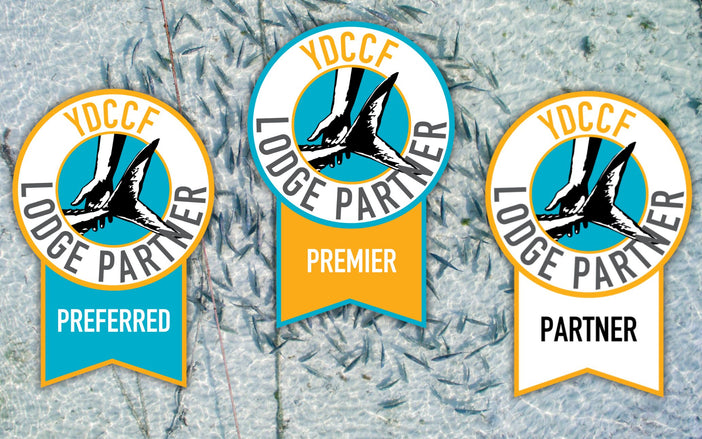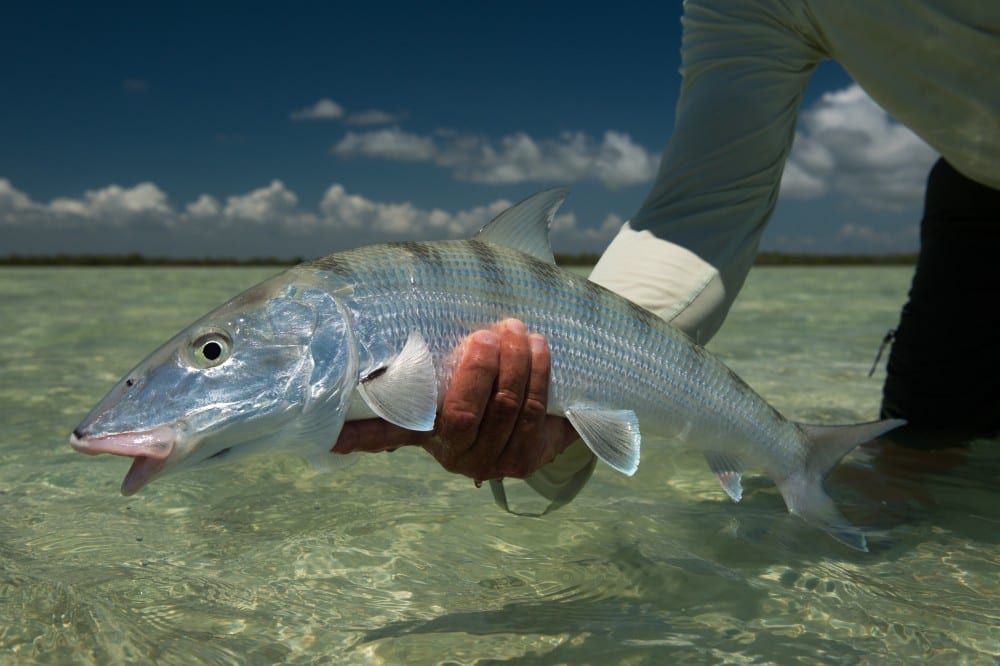Bonefishing in Cuba
This guide is broken into seven different sections to help you make the most of your next Cuba bonefishing adventure:
1) Stalking Bonefish on Foot
2) Proper Presentation
3) Fly Movement and Hook Set
4) Fly Fishing for Bonefish from the Boat
5) Fighting Bonefish on the Fly Rod
6) The Release and Gear Check
7) Gear, Flies and Leader Recommendations
8) Our Favorite Cuba Bonefish Trip
With each year that passes, there are fewer saltwater flats in the western hemisphere that remain as pristine and untouched as the bonefish flats in Cuba.
The vast amount of pure tidal flats and the many archipelagos that surround the country have created a saltwater fly-fishing heaven that seems to have been masterfully designed for bonefishing.
This is due in large part to an extraordinary effort from Avalon Cuban Fishing Center's push to protect the flats and waters in Cuba. Avalon has executed an operation that has allowed them to gain control and preserve Cuba's incredible fisheries by:
1) Securing exclusive rights to the fisheries in which it operates
2) Banning commercial fishing within their designated areas
3) Forming the first "Fly Fishing Only" sanctuary in the world
4) Creating zones within their fisheries to evenly distribute fishing pressure
The Cuban government also has several marine parks, including the largest in the Caribbean, Gardens of the Queen, where Avalon conducts its Avalon Fleet II live-aboard.
But don't be fooled.
Fly fishing Cuba's saltwater flats is still just like anywhere else you'll fly fish for bonefish, permit, and tarpon. And it has been open to fishing for the rest of the world for many years.

Remember that it's still fishing; however, if you go, you will have plenty of chances at BIG bones, permit, and tarpon.
The average size of bonefish in Cuba varies from place to place, but most fall within the five-to-six pound range.
Casting to bonefish in the eight-to-nine-pound range is not uncommon and one will most likely have several good chances during a six-day fishing stint.
Excited yet? Let's explore what you need to know to put the smackdown on some Cuban bonefish.
Stalking Bonefish On Foot
Chances are, you'll get to do some quality wet wading while fishing the saltwater flats in Cuba. For a lot of anglers, stalking bonefish on foot is the pinnacle of a great saltwater fly-fishing experience.
Here are a few tips to increase your chances of connecting with a big Cuban bone while wading:
- Walk slowly: When wade fishing it is better to let the fish come to you. Bones are called the “ghosts of the flats” for a very good reason: they can appear out of nowhere. If you are splashing and tromping through the water they will detect the vibrations through their lateral line and spook.
- Use the Sun: If you have a harsh glare on the water it is best to stop walking and wait for sun, or seek skinny water where you can see fish tailing and making nervous water.
-
Do Not Overlook for Fish: Casually scan the water for movement, color changes, nervous water, and splashing. Cover ground quickly but thoroughly. You can create headaches and miss opportunities by glaring openly at empty water. Relax your eyes and let your natural predatory instinct locate the fish. This takes practice and confidence, but with more time on the water it will happen for you.
- Know Your Limit: Very few anglers in the world are able to spot bonefish at distances of 80 feet or more on a consistent basis. If you're only able to see out to 30 feet, then concentrate within that designated area and pace yourself accordingly. If you can only see bonefish consistently out to 30 feet, move through the water at a slower pace or else you run the risk of spooking the fish or not having the time to present a quality cast. Let your guide worry about what's far out in front of you.
- Always Have Your Tackle At Hand: Before you get out of the boat, place a spool of tippet and small selection of flies in your pocket. If you need to re-rig your tackle quickly, having everything you need at hand is vital for being prepared for incoming bonefish.
-
Know Your Tides: Learn from the guide’s intimate knowledge of the flats. Ask lots of questions on where the fish will be coming from and why. This will help narrow your eyes to specific areas.
Proper Bonefish Presentation Tips
The number one way to consistently catch more fish, no matter where you are in the world, is to make a solid presentation. Make your first cast count, and put the fly into the zone.
- Relax: This will create a smooth casting stroke and a natural presentation. Stress has no place in fishing. Being anxious will create a negative vibe between the angler and guide. Everyone misses fish!
- Cast low to the water: Utilizing a sidearm casting stroke will accomplish two things – there is less wind closer to the water, and the fish will not see the fly and line against the clouds or blue sky. This style of casting is much more stealthy.
- Always be connected: When you make your final delivery of the fly, never let go of the fly line. Make an “A-OK” sign with your stripping hand and let the line run through it. This will enable you to control the distance of the cast, place the line in your stripping hand quickly, and be ready to move the fly. Often a bonefish will jump on the fly as soon as it hits the water. Without a proper grip on the fly line you cannot set the hook.
- Be patient: When you first see a bonefish do not start casting immediately. Read the fish’s body language. Is it actively feeding or moving to the feeding grounds? This will alter how you present the fly.
- Better short than long: When dropping the fly on the final cast, it is better be short than to overshoot the fish. You can always wait to let the fish swim to the fly if your cast is too short of the target. If you overshoot the bonefish, you risk lining it which will most likely result in a spooked fish. Also, prey never swims toward a bonefish. Darwinism (natural selection) took care of that critter thousands of years ago.
- No hero casts: It is best to make a shorter, more accurate cast than a super long cast that is errant. By the time a long cast hits the water and sinks, the bonefish is most likely looking somewhere else.
Fly Movement and the Hook Set
Natural fly movement and a swift strip strike are essential in keeping your rod bent throughout your trip.
- Tip down: When stripping the fly or waiting for the take, keep the tip of your fly rod pointed down! This is a visual cue to not lift your rod when the fish eats. If you lift the rod, or make a "trout set," you move the fly out of the zone. Secondly, keeping your rod tip low will give you direct contact to the fish when you make your strip set. If the hook does not set on the first strip set, let it rest back to the sand, and then wait for the fish to find it again.
-
Do not over-strip to big bones: Bonefish prey use natural camouflage to hide. If you strip the fly as a large bonefish approaches, it is an unnatural movement, and might spook the fish. Smaller, less educated bones will eat a fly that is actively being stripped, so do not get in that habit for big’uns. Land the fly much closer to bigger bonefish and let their natural predatory instict kick in. You're looking for an instictive reaction!
-
Shrimp and crabs: The Cuban guides much rather have their clients fish shrimp-style flies than crab flies. You will most likely use the bonefish version of the Avalon fly, originally designed for permit. It is tied with bead chain eyes and rabbit strips to impart natural movement in the water, even when it is sitting still. Shrimp dart away from their predators in 6-12 inch bursts. You can mimic the same movement by stripping your fly line in short, 6-12 inch strips.
-
Spooky fish tactics: The bonefish in Cuba are not nearly as pressured as some of the other major bonefishing destinations throughout the Caribbean. But fish will be fish! You most likely will find at least one school of bonefish being particularly picky and skittish. Tie on a fly that will naturally breathe and show life in the water. Rabbit strip flies, such as the Bonefish Scampi, or flies tied with marabou are perfect for this. Lead the fish and let the fly sink to the bottom. Watch the body language of the fish and if they don't see your fly, give it a slight bump and let it sit again. Let the materials of the fly make the natural movement for you. Wait for a fish to pick the fly off the bottom.
-
The strip set: You do not need to strip set a bonefish like you do a tarpon. Bonefish have small, rubbery and soft mouths that a quality hook can easily penetrate. Once you feel resistance in your line, swiftly (but not too hard!) pull back on your fly line with your rod tip pointed down to the water.
Fly Fishing for Bonefish from the Boat
All of the Avalon fishing guides can speak English well. It's your job to communicate expectations, what you want to accomplish, and a system for spotting fish.
-
Never guide the guide: Always ask the guide what they think the day holds for you. Let them talk about their fishery and the conditions first thing in the morning. Then you may add some details on what you would like to accomplish for the day after the guide sets a game plan.
-
Develop a system: Talk to your guide before you start fishing on how the both of you will communicate spotted fish. Most likely you will use the clock system. 12 o'clock is straight out in front of the boat, while 3 o'clock is to your right and 9 o'clock to your left. If you're an American angler, your guide will most likely be using the metric system to inform you how far fish are away. You often don't really think about it when you're on a skiff in the middle of nowhere, but there are approximately three feet in a meter.
-
Manage your line: When fishing from a boat you need to be ready for your guide to call a shot at a moments notice. You'll earn some brownie points with your guide if you: 1) go ahead and strip out the maximum amount of line you're capable of casting at your feet 2) cast the line out onto the water 3) strip it back in on the bow of the boat and 4) keep 10 feet of fly line out of the tip of your fly rod while holding the fly with your non dominant hand. If possible, bring a bucket or even a collapsable laundry hamper to place your line in.There's nothing worse than losing a big fish because your line got wrapped around your toe. And remember, it is a lot harder to shoot your line when it's outside of the boat in the water.
4. Stay back off the bow: It is best to not stand on the very front of the boat when being poled. Take two to three steps back. This will create less of a silhouette against the sky to an approaching fish. This is especially true when you start casting and especially if the sun is behind you.
Fighting Bonefish on the Fly Rod
-
Prevent slack when fighting a bonefish: Oftentimes, a bonefish will run hard and then turn right back at you. This will create lots of slack in the line, and your de-barbed fly will fall out of the fish’s mouth. To prevent this, put your rod tip in the water and reel quickly. The pressure of the water and current will keep tension on the line and fish. Just be mindful of obstacles in the water. Keeping the fish on the reel is imperative to preventing snags and tangles around the boat.
-
Keep the rod high: When a bone is running keep your rod tip as high as you can. Raise the reel above your head. This will keep the line away from the bottom of the flat, so you'll avoid getting cut on any coral, rocks, or sea fans. Bonefish have a tendency to run around anything that can break your line.
-
Use leverage when fishing for bonefish: When fighting any fish, always angle the rod toward the tail of the fish. This will ensure the fly stays locked into the back of the fish’s mouth. Once the fish is within 50 feet, give’em the “down and dirty” by lowering your rod toward the water and pulling away from the head of the fish. This will throw off the fish’s equilibrium so you can land the fish quickly, which will allow for a healthy release.
The Release and Gear Check
-
Check your knots: After every fish hooked be sure to check your leader, tippet, and knots. The slightest nick in your line can cause the “fish of a lifetime” to break off.
-
Clean your fly line: After you get back from fishing, clean your fly line. This will allow the line to slide through the guides friction free, resulting in a smoother and longer cast. It is will also keep the line from sinking.
-
Turn down your drag: When not fishing set your drag to the lowest setting (less drag). This will prevent long term torque or pressure on the mechanics of your drag, which will ruin your reel’s drag effectiveness.
-
Wet your hands: Before handing any fish always wet your hands! This will ensure you do not remove their protective slime. For bones this slime masks their scent from predators like sharks and barracuda. It is best to not even handle the fish. If you want a photo, keep the belly of the fish in the water to support its internal organs.
Gear, Flies, and Leader Recommendations
-
Rods: We recommend either an eight or nine weight fly rod for fly fishing the saltwater flats in Cuba for bonefish. If you must pick between the two different weights, bring a nine. There's always the chance that you could run into a school of permit, and if you're fishing a versatile fly like the Avalon, you won't be undergunned. The wind on the flats can also make casting an eight-weight fly rod challenging.
If you haven't already, give Thomas & Thomas a look for purchasing your next saltwater fly rod. Alphonse Fishing Company exclusively uses Thomas & Thomas in the Seychelles to combat some of the hardest fighting fish in the flats fishing world.
-
Reels: When fly fishing in saltwater, always buy a fly reel that has a sealed drag system. A fly reel that doesn't have a sealed drag system runs the risk of collecting saltwater and locking up. Our favorite fly reels here at Yellow Dog are those made by Hatch Outdoors. Other exceptional saltwater fly reel companies are Nautilus Fly Reels, Tibor Reels, and Galvan. Make sure the fly reel you purchase or bring to Cuba can hold at least 180 yards of 20-lb. Dacron backing.
-
Sunglasses: If you do not invest in anything else, invest in a high quality pair of sunglasses! I cannot emphasize this enough. Crappy sunglasses makes for a frustrating experience and a lot of blown shots. Being able to see the fish that you are casting to is 50 percent of the battle. We recommend getting either a copper or green-colored 580G lens from Costa Del Mar.
- Flies
- Make sure you have a variety of flies in sizes #2-6. It is crucial to have flies in different weights from blind (weightless), to medium bead chain and larger dumbbell eyes. You will fish all different depths of water for bonefish in Cuba ranging from a few inches to a few feet. The basic fly box that will land you most of your bonefish consist of: Veverka Mantis Shrimp, Avalon Bonefish Fly, Veverka Spawning Shrimp Fly, Gotcha, Bonefish Scampis, Crazy Charlies and Squimps. Want to experiment? Take down some Enrico Puglisi bonefish shrimp patterns. My favorite from Puglisi is the EP Spawning Shrimp in Olive and Tan, size 4! Another incredible fly that you're guaranteed to love as much as the permit and bonefish is McKnight's Crimp Fly:
- Leaders
Understanding the right leader lengths and tippet sizes to use can be a bit confusing. First and foremost, find a comfort zone in the length of leader you are effeciently able to cast. That means finding the maximum leader length you'll be able to fully unroll on the most consistent basis.
If you're a mediocre caster using a sixteen foot leader, then you'll a) get a lot of wind knots, b) not fully unroll the leader on your presentation cast and c) not come taut and have an immediate connection to the fly once it lands.

On calm, glassy-water days, tend to increase the overall length of your leader that you can effeciently cast and decrease the tippet size. For most of Cuba, this calls for a 12 to 13-foot leader and 10 to 12-pound tippet. If the wind is blowing super hard, decrease your leader length (nine feet) and increase your tippet size to 14 to16 pounds.
I recently fished Cayo Largo the entire week using a 16-pound tippet and never got a refusal from a bonefish because of the tippet size, just a few sloppy casts. Want to tie your own leaders? Check out some of the best bonefish leader formulas from Bonefish on the Brain.
Where to Go Bonefishing in Cuba
All of our trips we book to Cuba offer bonefishing. But if you're solely focused on bonefishing and want legitimate shots at double-digit bones, then Cayo Coco/Cruz is a terrific place to go. The flats on the northern side of the main island of Cuba present an inviting combination of hard-packed white sand and a semi-firm mottled bottom that still provides good wading. Collectively referred to as Cayo Romano and Cayo Cruz this is our preferred destination in Cuba for those who like to wade or those who are focused on permit and bonefish (though tarpon and snook can also be found along with other target species). It’s very similar to Los Roques, Venezuela in terms of the vast area that’s wadable.

Now get your gear ready, give Yellow Dog Flyfishing Adventures a call, and prepare yourself for some of the best bonefishing of your life.
Get Prepared For Your Next Cuba Trip
+ Shop Our Cuba Equipment List
+ Shop Our Cuba Fly Assortment
Related Articles:
